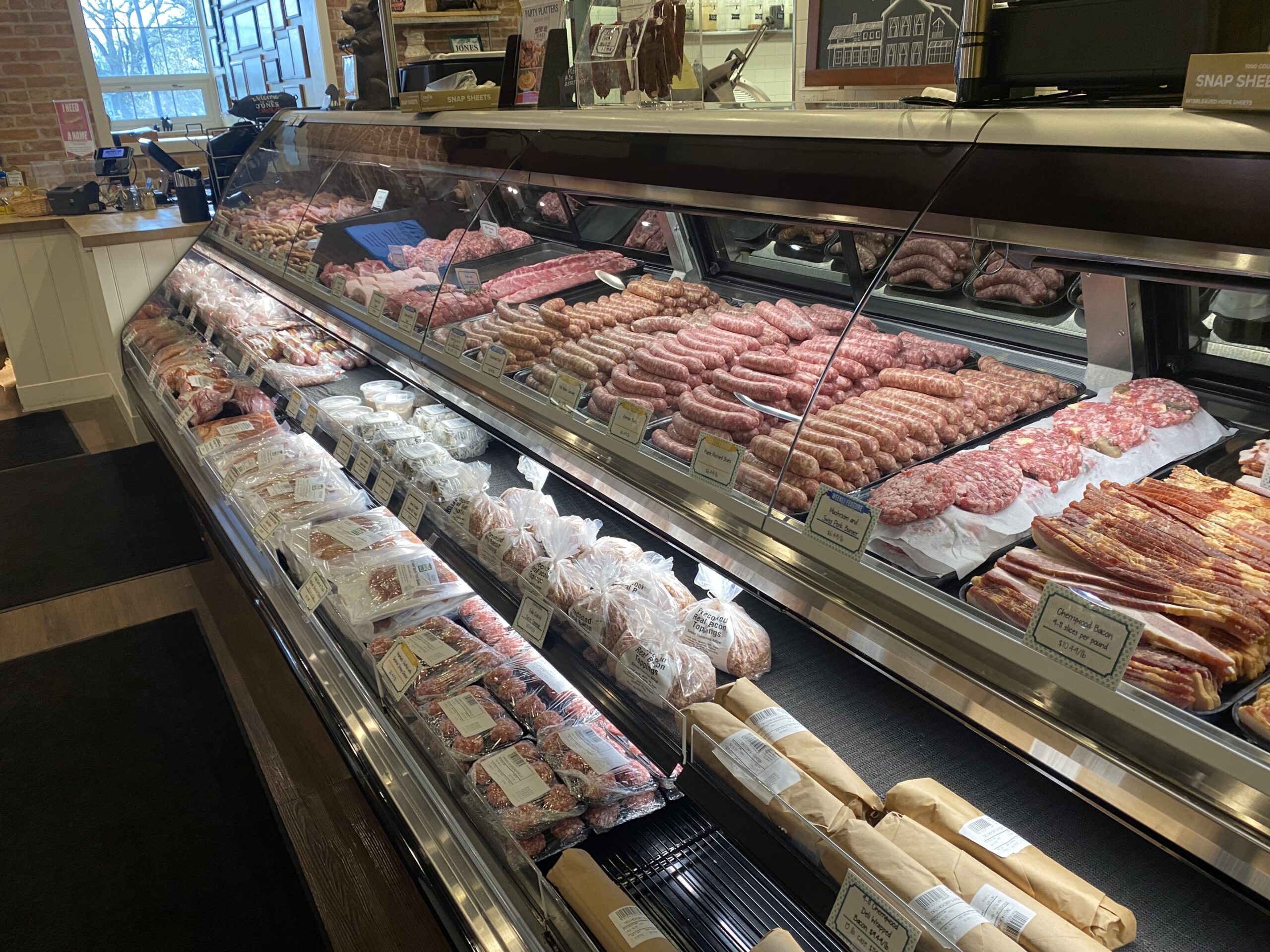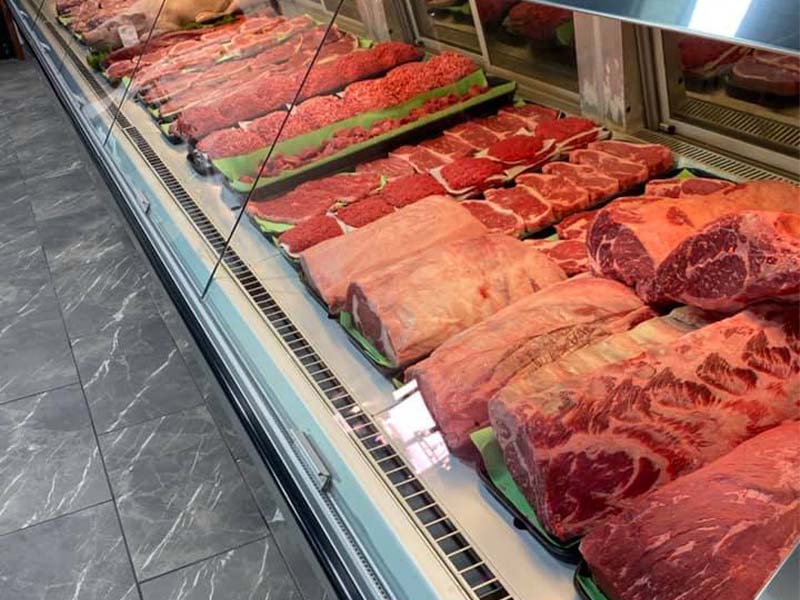Explore the Neighborhood Flavor at Bagley Farms Meat Market Edwardsville IL: Fresh and Delicious
Explore the Neighborhood Flavor at Bagley Farms Meat Market Edwardsville IL: Fresh and Delicious
Blog Article
Uncover the Art of the Butcher's Cut in a Modern Meat Market
In the ever-evolving landscape of modern meat markets, the butcher's cut has transcended its traditional origins, combining olden craftsmanship with contemporary practices. Today's butchers are not just cpus of meat; they are experienced craftsmens who emphasize sustainability and moral sourcing. Their expertise in choose and preparing cuts customized to particular culinary demands supplies an unmatched eating experience. Yet, what genuinely sets the modern butcher apart is their capacity to create a deeper link between consumers and the beginnings of their meat. Exactly how do these masters equilibrium custom with innovation, and what effects does this have for the future of meat usage?
Evolution of Butchery Techniques
The advancement of butchery methods reflects a rich tapestry of technology and adaptation driven by developments in modern technology, changes in consumer demand, and a deeper understanding of meat scientific research. Historically, butchery was a craft gave with generations, with approaches refined over centuries to make the most of return and flavor. The industrial transformation ushered in automation, transforming conventional techniques and making it possible for large-scale processing.
The mid-20th century saw butchery strategies further refined by scientific understandings right into muscle biology and meat aging, enhancing both tenderness and preference. Technologies like vacuum packaging and refrigeration prolonged product shelf-life, enabling butchers to expand offerings and boost quality control. This period likewise marked the increase of customized tools, such as band saws and meat slicers, which increased precision and efficiency in meat processing.

Computerized systems currently help in tracking pet provenance and enhancing cuts to meet specific consumer preferences. Additionally, a rebirth in artisanal butchery has emerged, mixing conventional abilities with modern-day understanding to provide to consumers seeking honest and sustainable meat alternatives.
Comprehending Meat Cuts
Understanding the details of meat cuts is essential for both butchers and customers seeking top quality and value. Each cut comes from a different component of the pet, imparting special flavors, appearances, and cooking methods - bagley farms meat market edwardsville il. Proficiency of these differences not just enhances cooking experiences but likewise takes full advantage of the utility of each carcass. For butchers, exact cuts reflect skill and regard for the craft, guaranteeing marginal waste and optimal return.

Comprehending muscle mass composition is crucial; muscular tissues utilized much more regularly by the pet have a tendency to be harder and are best fit for slow food preparation techniques, while less-used muscles, like those located in the loin, are a lot more tender and ideal for cooking or roasting. Experience with these distinctions encourages consumers to make enlightened options, boosting their culinary endeavors.
Choosing Top Quality Meat
Selecting the right meat entails more than simply picking an aesthetically enticing item from the display. bagley farms meat market edwardsville il. The art of picking quality meat calls for a discerning eye and expertise of particular features that represent quality and excellence. First of all, focus on the color; beef needs to have a bright, cherry-red color, while lamb should display a soft pink tone, and pork a light pink. This shows the meat is fresh and hasn't been exposed to oxygen for too long.
Second of all, take into consideration the marbling, which describes the white flecks of fat within the muscle. Appropriate marbling is a crucial indication of inflammation and taste, as it melts during cooking, enhancing the meat's juiciness. Keep in mind, greater marbling commonly associates with exceptional top quality cuts, such as USDA Prime.
Structure is one more important variable; meat needs to really feel strong to the touch, not slimed or extremely soft. In addition, bear in mind the scent. Fresh meat should have a clean, neutral smell, free from any sour or off-putting smells.
Coupling Cuts With Food Preparation Approaches

Conversely, tougher cuts like brisket and chuck roast are abundant in collagen, which damages down right into gelatin when cooked slowly. These cuts are excellent for braising or slow roasting, enabling the meat to soften with time and create deep, complex flavors. Cuts such as brief ribs and pork shoulder make out well with slow-cooking approaches, where extended cooking times transform their robust textures into succulent dishes.
Lamb shanks and oxtail, which require prolonged cooking to tenderize, are ideal candidates for stewing or slow simmering. These methods coax out rich, hearty flavors while maintaining moisture. By understanding the unique qualities of each cut, cooks and home chefs alike can raise their culinary developments, making sure each meal is both satisfying and memorable.
The Butcher's Role Today
Browsing the progressing landscape of the modern meat market, the butcher's duty today prolongs beyond plain preparation of cuts. Contemporary butchers are cooking craftsmens, educators, and supporters for sustainable techniques. They connect the gap in between the farm and the fork by making certain honest sourcing, understanding pet husbandry, and prioritizing openness in the supply chain. This shift shows the growing customer demand for high quality over quantity, where provenance and pet welfare are vital.
Along with crafting exact cuts, butchers now engage straight with customers, using cooking advice and tailoring options to suit private demands and preferences. Their know-how in meat aging, marbling, and flavor profiles equips customers to make informed decisions, boosting their cooking experiences. This customized solution exhibits the butcher's evolving function as a relied on expert in the kitchen.
Furthermore, butchers are essential in decreasing waste, utilizing whole animals to develop varied items such as sausages and next supplies. This thorough approach not only appreciates the pet yet additionally aligns with contemporary sustainability goals. This way, the contemporary butcher symbolizes both practice and technology, adapting to an ever-changing market while preserving the artistry and integrity of their craft.
Final Thought
The contemporary butcher's craft elaborately weaves standard methods with modern-day technologies, stressing sustainable methods and honest sourcing. Mastery in comprehending diverse meat cuts and quality indicators empowers butchers to provide informed recommendations, aligning specific cuts with optimum food preparation approaches. site This experience not just boosts cooking experiences however also strengthens the link in between customers and the origins of their food. By honoring historic techniques while accepting contemporary demands, the butcher's duty stays crucial in today's advanced meat market (bagley farms meat market edwardsville il).
Report this page